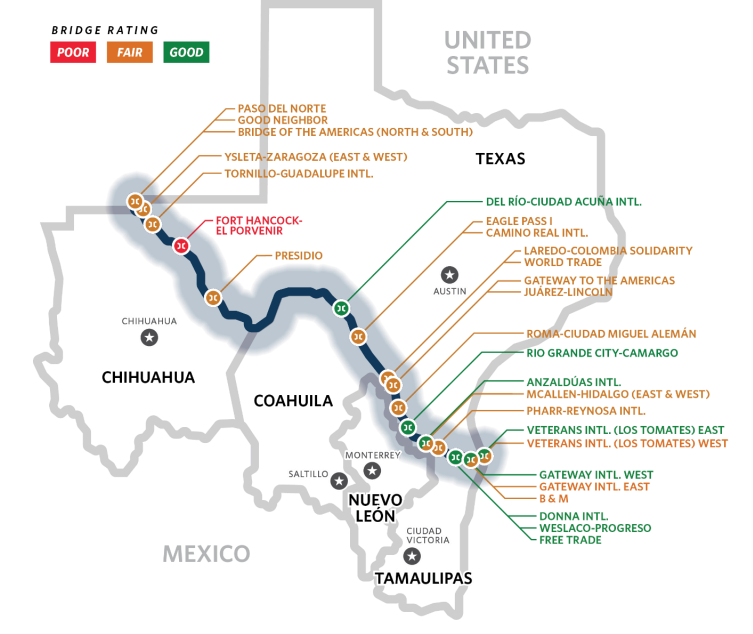The Texas Transportation Commission approved the Texas-Mexico Border Transportation Master Plan (BTMP) on March 25 that forecasts strong economic growth but cautions that border infrastructure improvements are needed to avoid crossing times rising to unmanageable levels.
Texas Department of Transportation (TxDOT) staff presented the plan, which projects:
- The value of goods moved by commercial motor vehicles (CMVs) across the Texas-Mexico border will surpass $1.2 trillion by 2050, a 257 percent increase from $342 billion in 2019. CMV movements are forecast to grow by 168 percent in 2050 from 4.6 million in 2019 to 12.3 million in 2050.
- 81 percent of total trade crossing the border will be moved by CMV, a 5-percentage point increase from 2019, highlighting the importance of effective border infrastructure and processes to facilitate trade and economic growth in both the U.S. and Mexico.
- Both the value and volume of rail trade will grow by more than 165 percent between 2019 and 2050. The value of goods moved by rail is forecast to be $210 billion by 2050, compared to $74.8 billion in 2019.
- By 2050, 112.4 million people will cross the Texas-Mexico border, an increase of 26.1 million (30 percent) from the 86.3 million people crossing in 2019. Most of these people cross the border in passenger vehicles.
 The forecasted tripling of CMV movements by 2050 will strain processing capabilities at border crossings. CMV wait times, both average and 90th percentile, are forecast to increase dramatically by 2050, with average crossing times forecast to exceed 90 minutes for several of the Larger Border Crossings, and in some instances forecast to reach three hours.
The forecasted tripling of CMV movements by 2050 will strain processing capabilities at border crossings. CMV wait times, both average and 90th percentile, are forecast to increase dramatically by 2050, with average crossing times forecast to exceed 90 minutes for several of the Larger Border Crossings, and in some instances forecast to reach three hours.Although the BTMP covers a vast region, the highest needs are concentrated within the last mile of the border. Investments are needed to improve congestion, reduce safety incidents and crashes, and maintain infrastructure assets to ensure the system is prepared for current and future challenges and opportunities.
TxDOT will continue engaging the Border Trade Advisory Committee and other stakeholders in implementing the plan. In addition, the department will continue strengthening Texas-Mexico partnerships.
It is currently undertaking a procurement to support the implementation of the plan by advancing the recommendations.
